While I'm on a roll... Here are some photos of a very challenging restoration of, what I believe is, an E.M. White. I have another 20' White built around 1913 and everything about this canoe said E.M. White from the beveled and wide planking, shape of the thwarts, and decks, to the tapered ribs. Unfortunately, you will see in the pics, not a lot was salvageable. The canoe was given to me by a guy who restores canoes proffesionaly. After the cost of his time and materials, he would not have been able to turn a profit. I, on the other hand, was looking for a challenge, not a profit. Careful what you wish for!
I intentionally left the new wood natural rather than trying to match the dark patina of the original wood. This was a challenge project so I thought it would be better to allow one to see what was new and what was saved.
I basicaly was able to save 13 of 49 ribs, 2 of 4 thwarts, 1 seat, a handful of half ribs, and about 25 linear feet of planking. After replacing the rest - she was as good as new!
I intentionally left the new wood natural rather than trying to match the dark patina of the original wood. This was a challenge project so I thought it would be better to allow one to see what was new and what was saved.
I basicaly was able to save 13 of 49 ribs, 2 of 4 thwarts, 1 seat, a handful of half ribs, and about 25 linear feet of planking. After replacing the rest - she was as good as new!
Attachments
-
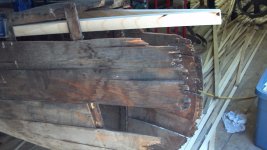 photo5184.jpg408.8 KB · Views: 9
photo5184.jpg408.8 KB · Views: 9 -
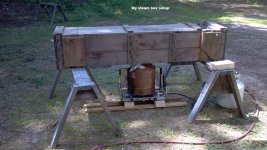 photo5186.jpg610 KB · Views: 6
photo5186.jpg610 KB · Views: 6 -
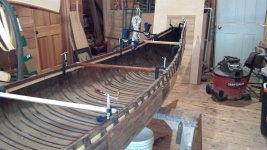 photo5185.jpg433 KB · Views: 8
photo5185.jpg433 KB · Views: 8 -
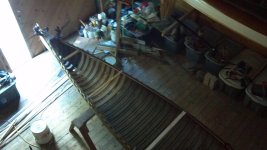 photo5187.jpg355.2 KB · Views: 4
photo5187.jpg355.2 KB · Views: 4 -
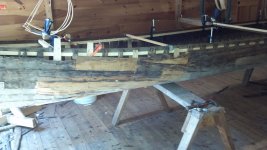 photo5189.jpg382.4 KB · Views: 4
photo5189.jpg382.4 KB · Views: 4 -
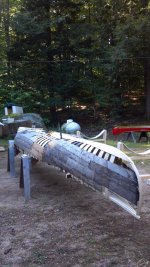 photo5190.jpg610.5 KB · Views: 4
photo5190.jpg610.5 KB · Views: 4 -
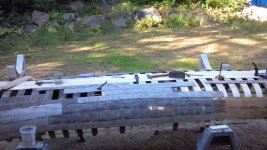 photo5188.jpg586 KB · Views: 3
photo5188.jpg586 KB · Views: 3 -
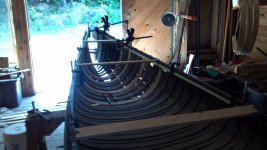 photo5191.jpg359.4 KB · Views: 4
photo5191.jpg359.4 KB · Views: 4 -
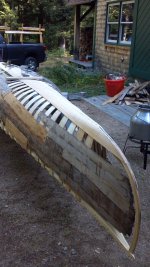 photo5192.jpg557.9 KB · Views: 4
photo5192.jpg557.9 KB · Views: 4 -
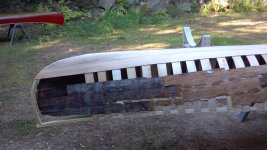 photo5193.jpg546.8 KB · Views: 4
photo5193.jpg546.8 KB · Views: 4 -
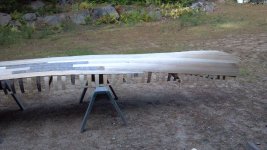 photo5194.jpg592.6 KB · Views: 3
photo5194.jpg592.6 KB · Views: 3 -
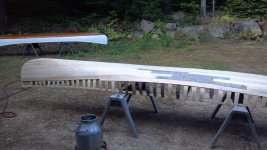 photo5195.jpg566 KB · Views: 2
photo5195.jpg566 KB · Views: 2 -
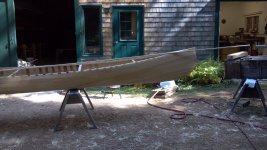 photo5196.jpg517.4 KB · Views: 3
photo5196.jpg517.4 KB · Views: 3 -
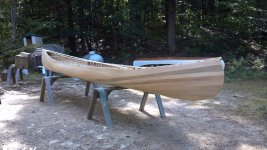 photo5197.jpg634.3 KB · Views: 3
photo5197.jpg634.3 KB · Views: 3 -
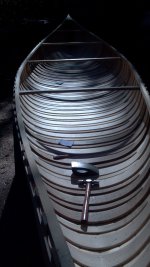 photo5198.jpg384.2 KB · Views: 4
photo5198.jpg384.2 KB · Views: 4 -
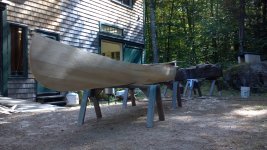 photo5199.jpg623.1 KB · Views: 1
photo5199.jpg623.1 KB · Views: 1 -
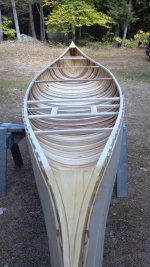 photo5200.jpg572.1 KB · Views: 3
photo5200.jpg572.1 KB · Views: 3 -
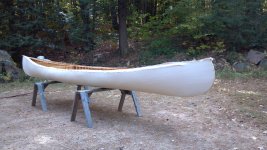 photo5201.jpg661.9 KB · Views: 1
photo5201.jpg661.9 KB · Views: 1 -
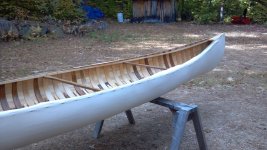 photo5202.jpg602 KB · Views: 3
photo5202.jpg602 KB · Views: 3 -
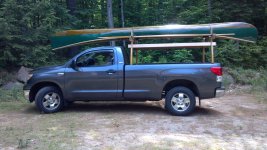 photo5203.jpg569.3 KB · Views: 3
photo5203.jpg569.3 KB · Views: 3 -
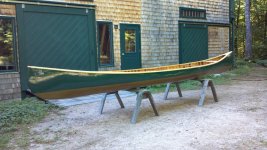 photo5204.jpg565.7 KB · Views: 2
photo5204.jpg565.7 KB · Views: 2 -
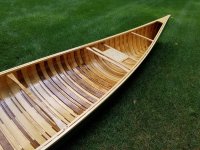 photo5205.jpg923.1 KB · Views: 3
photo5205.jpg923.1 KB · Views: 3 -
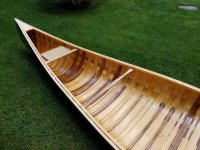 photo5206.jpg898 KB · Views: 2
photo5206.jpg898 KB · Views: 2 -
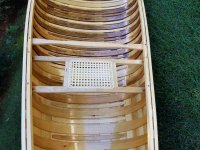 photo5208.jpg821.3 KB · Views: 4
photo5208.jpg821.3 KB · Views: 4 -
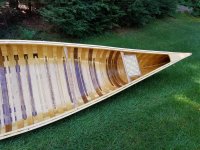 photo5207.jpg945.1 KB · Views: 2
photo5207.jpg945.1 KB · Views: 2 -
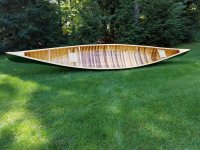 photo5209.jpg1.1 MB · Views: 4
photo5209.jpg1.1 MB · Views: 4 -
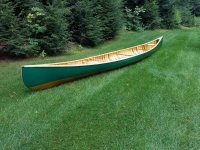 photo5210.jpg1.1 MB · Views: 6
photo5210.jpg1.1 MB · Views: 6 -
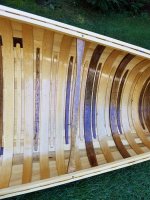 photo5211.jpg756.3 KB · Views: 5
photo5211.jpg756.3 KB · Views: 5 -
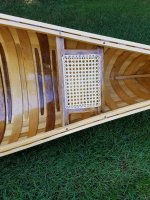 photo5212.jpg909.4 KB · Views: 5
photo5212.jpg909.4 KB · Views: 5 -
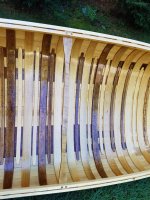 photo5213.jpg755.9 KB · Views: 4
photo5213.jpg755.9 KB · Views: 4 -
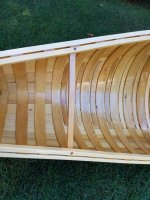 photo5214.jpg739.4 KB · Views: 4
photo5214.jpg739.4 KB · Views: 4 -
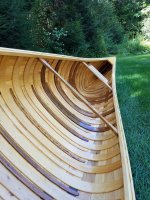 photo5215.jpg836.8 KB · Views: 4
photo5215.jpg836.8 KB · Views: 4 -
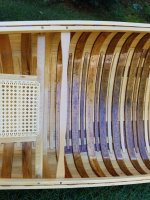 photo5216.jpg749.2 KB · Views: 3
photo5216.jpg749.2 KB · Views: 3 -
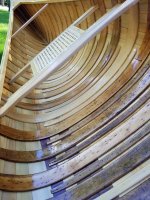 photo5217.jpg780.1 KB · Views: 2
photo5217.jpg780.1 KB · Views: 2 -
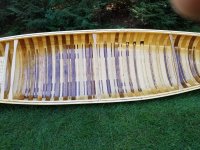 photo5218.jpg883.8 KB · Views: 5
photo5218.jpg883.8 KB · Views: 5
